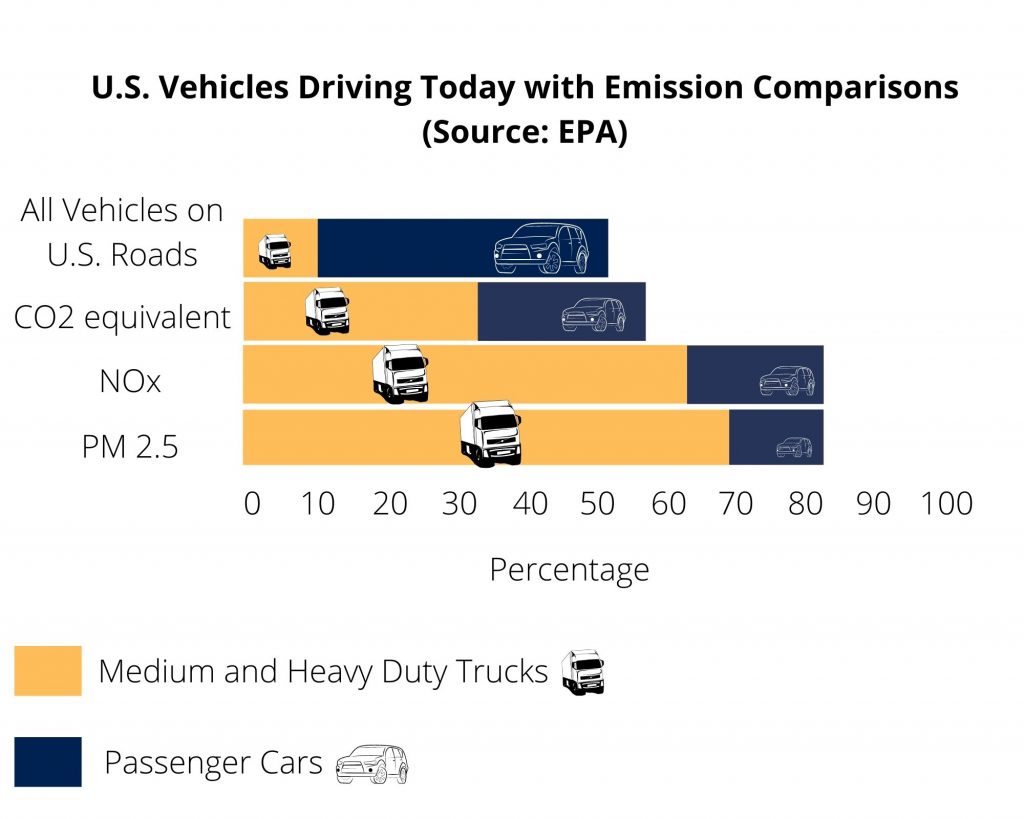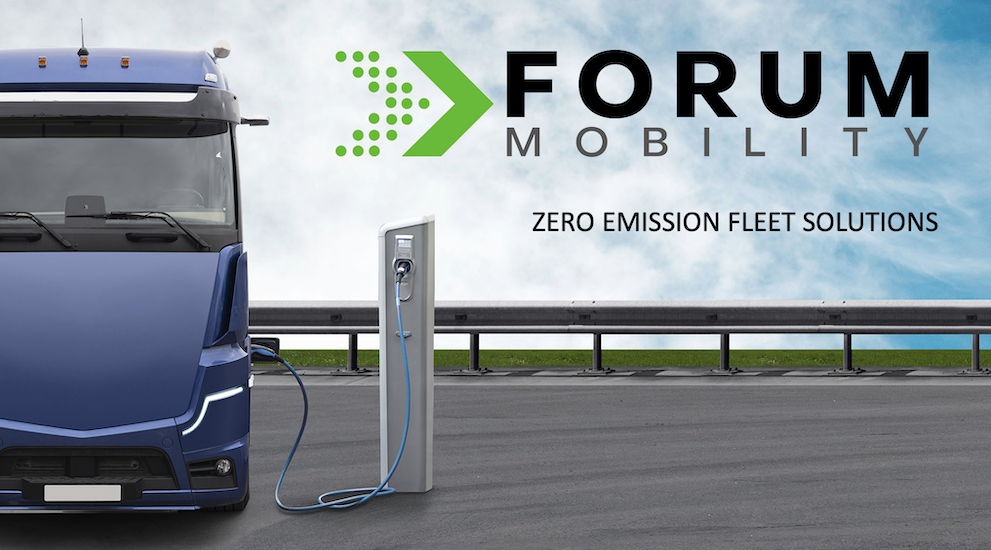
by Kim Oster, Chief Strategy Officer
Growing health crisis for port communities
California port cities have some of the worst air quality in the United States. Why?
Heavy-duty diesel trucks that transport goods from ship to distribution centers, typically across short distances (known as ‘drayage’) have low-fuel efficiencies and create a disproportionate amount of carbon dioxide and pollution. This is particularly evident around the ports of Los Angeles and Long Beach – the busiest ports nationwide.
Emissions in these areas have increased in recent months due to substantially more cargo imports that have heightened congestion. The California Air Resources Board (CARB) reports that, as of October 2021, these issues have resulted in emissions spiking to an unprecedented level.

Sadly, underserved and vulnerable low- to medium- income (LMI) port communities are the most impacted by pollution and health issues linked to poor air quality. These communities bear a disproportionate health burden from freight movement. For instance, it is estimated that in California, African-American, Latino, and Asian Californians experience respectively 43%, 39%, and 21% higher level of PM2.5 pollution relative to white Californians (Union of Concerned Scientists, 2019). And, California’s transportation sector accounts for about 50% of the state’s greenhouse gas emissions, nearly 80% of nitrogen oxide pollution and 90% of diesel particulate matter pollution.
Mandated fleet electrification
Zero emission freight trucks are critical to both reducing global greenhouse gas emissions and improving public health. To address this issue, state policy has centered around reducing air pollution that results in childhood asthma, lung cancer, and even premature death in surrounding communities.
- CARB has developed a number of mandates to reach the goal of zero-emission drayage trucks by 2035.
- One quickly approaching mandate, which takes effect on January 1, 2023, requires that drayage trucks have a 2010 model year engine or newer to continue entering California ports.
- The rest of the nation is starting to follow with similar regulations – in fact, 15 States and D.C. are seeking to achieve 30% zero emission vehicle sales for new medium-and heavy-duty vehicles by 2030.
Benefits of ZEV transport
Converting to an all-electric fleet is necessary to meet mandates, which in turn will enable a sustainable, resilient, clean energy future. Reducing the growing threat of climate change and improving public health are absolutely tantamount and the most important benefits to widespread heavy-duty fleet electrification.
Additionally, reducing supply chain emissions enables large corporations to achieve Scope 3 Emissions targets and environmental, social and corporate governance (ESG) goals. Decarbonizing the movement of goods is also an opportunity to gain economic advantage. The transition to ZEVs will result in lower operating and maintenance costs for a better total cost of ownership than diesel, natural gas or fuel cells. In fact, the decreasing cost of batteries could soon make electric freight trucks 50% cheaper to own than diesel, according to Lawrence Berkeley National Lab.
From an overall economic growth and prosperity perspective, the clean energy sector has always been a reliable job creation engine. That holds true for fleet electrification as well. According to the EPA, in 2020, nearly 132,000 individuals were employed in EV related jobs across the U.S., with employment growing more than six percent, the biggest increase of any clean energy category.
Closing the gap
While more companies are investing in electric fleets, the necessary and dedicated charging infrastructure does not exist where needed to serve the drayage industry. There is an acute demand for building EV charging infrastructure to transition from combustion to electric engines. Forum Mobility is well-positioned to fulfill this critical gap in the heavy-duty transportation market.
We’ve developed an innovative, technology-agnostic, electric vehicle charging depot exclusively for drayage that removes the burden of land acquisition, managing interconnection with the electrical grid, optimizing electricity rates and navigating development, financing, incentives, rebates and tax credits. As we build out our network of depots along drayage corridors, corporate partners will have access to all charging stations along their routes. In addition, our revolutionary technology collects critical data to help organizations track their scope 3 emission reductions, while also improving the efficiency of goods movement.
Our team
Our team’s extensive background spans decades of executing complex energy infrastructure projects. The combined group has managed $20 billion in renewables transactions, with deep expertise in infrastructure development, engineering, financing and operations.
We understand large-scale projects and are dedicated to building a clean energy ecosystem that delivers value to companies transporting goods, while promoting a sustainable zero-carbon future.
Contact us today to learn more about how we can help.


Recent Comments